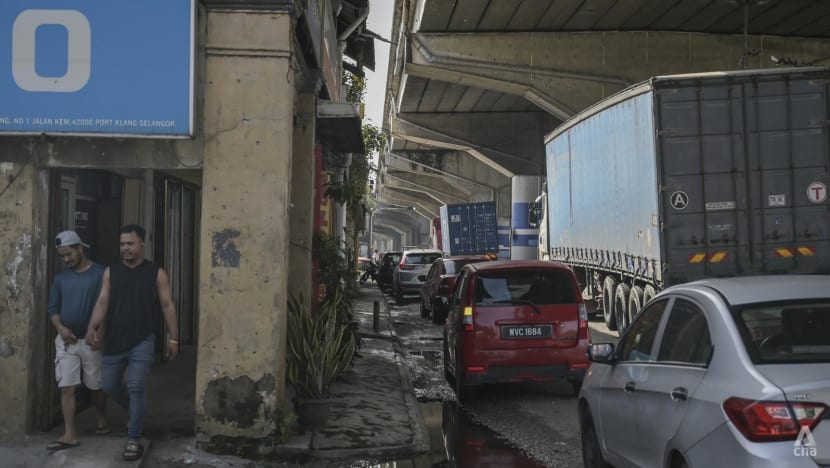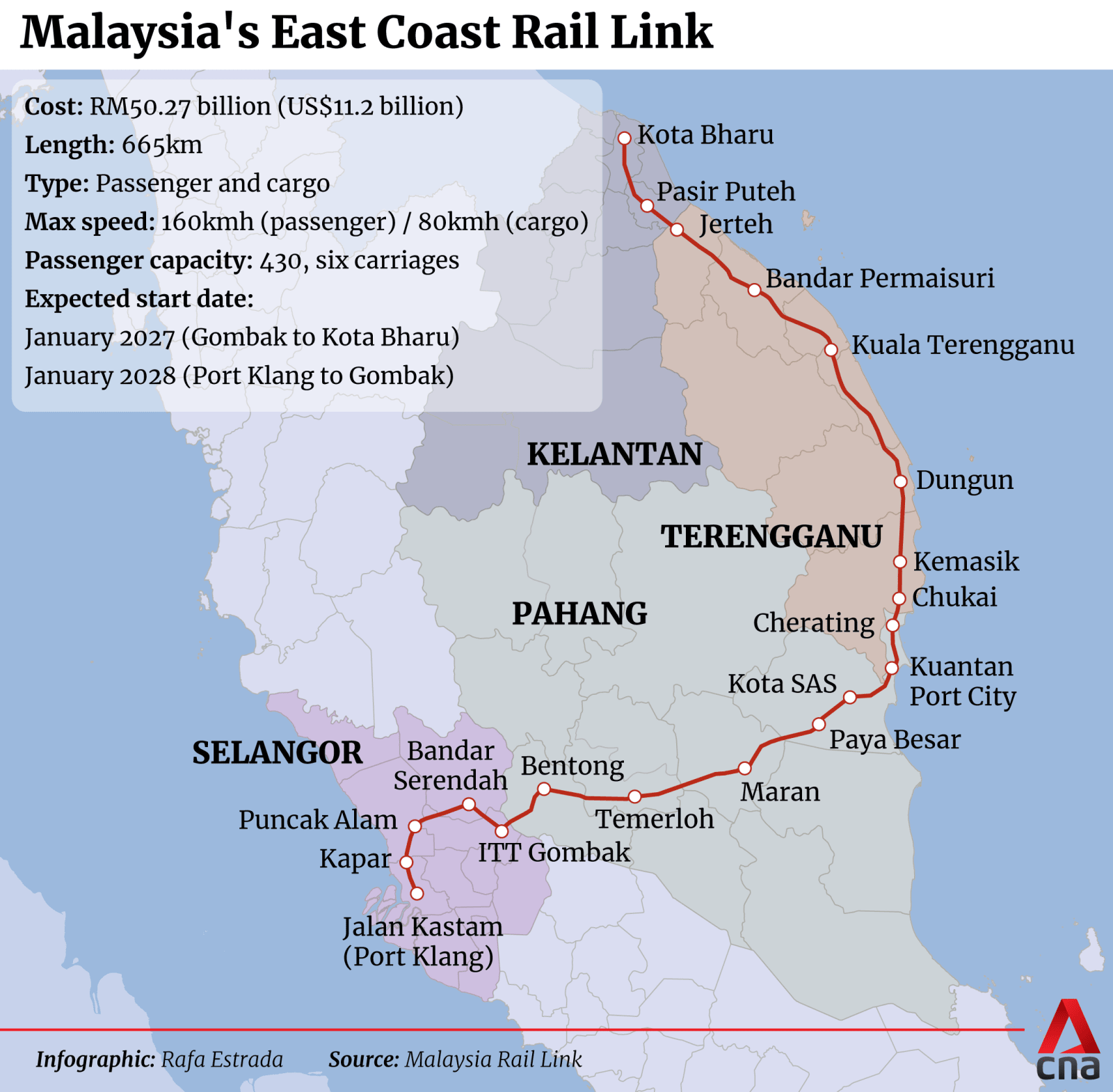KLANG/KUANTAN, Malaysia: Next to a small commuter train station in Port Klang, in the western Malaysian state of Selangor, lies a boarded up construction site.
The construction site reflects the port town’s heavily industrial facade: Run-down shophouses that almost kiss the sides of elevated highways, narrow two-lane roads pockmarked by potholes and long container-laden trailers rumbling by.
But a redevelopment of the ferry terminal by a unit of the Sunway conglomerate, expected to be completed in the first half of 2027, together with the East Coast Rail Link (ECRL) extension from Gombak to Port Klang in January 2028, is expected to give the port area a classy facelift, analysts say.
The railway, which runs through 20 stations spanning 665km across Selangor, Pahang, Terengganu and Kelantan, aims to improve domestic connectivity for both passengers and goods.
Last November, CNA visited the areas around the ports of Klang and Kuantan to get a sense of their vibrancy and liveability or lack of. CNA also spoke to residents and business owners on how they think the ECRL might change their neighbourhoods.
Foo Gee Jen, adviser at real estate agency CBRE WTW, said Sunway Real Estate Investment Trust’s (REIT) redevelopment of the ferry terminal - alongside plans by the State Development Corporation of Selangor to develop next-door Carey Island into a port city - bodes well for the rejuvenation of Port Klang.
“The early years of Port Klang development was very much piecemeal, and at the moment it's a lot more controlled,” he told CNA, noting that such big developers will bring better planning and organisation to the area.
“You look at some port cities in Europe and other places like Nagoya (in Japan) - they’re very organised. Certainly, I think that Port Klang eventually will be like that.”
The upgraded ferry terminal will feature an international jetty, seafood market, food and beverage outlets, and proposed duty-free shops, while the nearby ECRL station will further boost tourism by connecting passengers to Selangor’s Gombak district - near Kuala Lumpur - and beyond to the pristine beaches of the east coast in four hours.
The current commuter line from Port Klang runs along multiple minor stations and takes one-and-a-half hours just to get to Kuala Lumpur, before going only as far as Tanjung Malim on the border of Perak on the west coast.
Ultimately, Foo believes the ECRL is the final step to revive the area by making it a more attractive sea entry point for tourists, with connections beyond Kuala Lumpur to other places like the Titiwangsa mountain ranges or the rainforests of Pahang.
“It will be beneficial to bring these people, who are coming by cruises, inland via the ECRL rail,” he added, noting that the upcoming West Coast Expressway, expected to be completed by 2026, will further enhance connectivity to Pulau Indah, where the main cruise terminal is located.
“If you look at the evolution of development, the crucial part that's missing has always been rail. I think that is very, very crucial because on the road, there's a lot of uncertainty.”
The West Coast Expressway, whose construction will be prioritised this year, will connect Banting, Selangor to Gelang Patah, Johor as well as the two major ports of Klang and Tanjung Pelepas in Johor.

